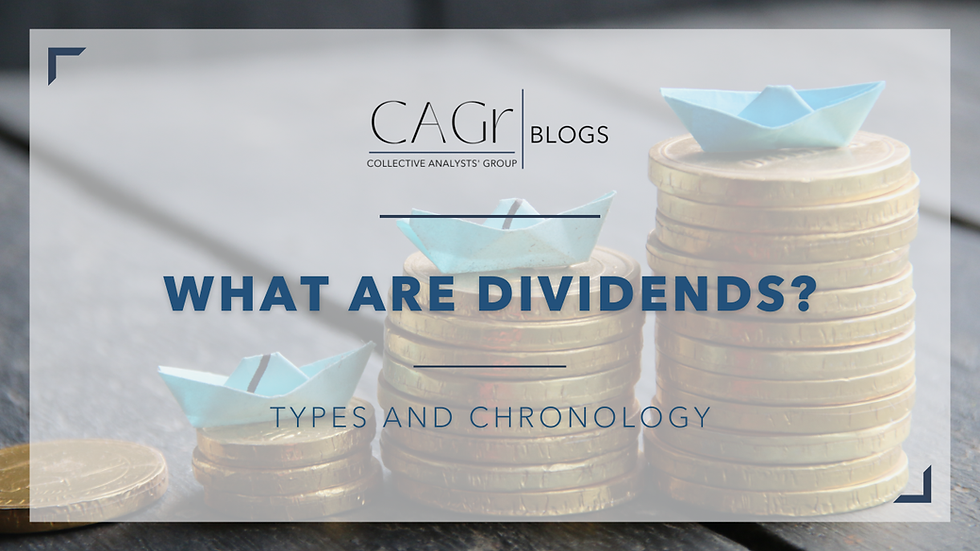Understanding Dividends: Chronology and Types
- Collective Analysts Group
- Dec 20, 2023
- 2 min read
Introduction
Dividends are an integral part of the investment world, providing a steady stream of income for investors. They come in various forms, each with its own set of characteristics and implications. The purpose of this blog post is to delve deeper into the types of dividends and their chronology, providing you with a comprehensive understanding of this crucial aspect of investing.
Types of Dividends
Dividends can be divided into three main types: cash dividends, stock dividends, and property dividends. Cash dividends are the most common type and are simply cash payments made to shareholders. While they provide immediate returns, they can also lead to capital outflow for the company. Stock dividends, on the other hand, involve the distribution of additional shares instead of cash. They differ from cash dividends in that they do not result in any cash outflow but can dilute the stock's price. Lastly, property dividends are a less common form of dividends where the company distributes property it owns, such as real estate or physical assets. Considerations for this type of dividend include the market value of the property and the tax implications.
Dividend Chronology
The dividend chronology consists of four important dates: the declaration date, record date, ex-dividend date, and payment date. The declaration date is when the company announces a dividend payment, which is significant as it indicates the company's financial health. The record date is the cutoff date to determine which shareholders are eligible for the upcoming dividend. The ex-dividend date is the first day the stock trades without the dividend, which can impact the stock's price. Finally, the payment date is when the dividends are actually paid out to the shareholders.
Reinvestment Options
When it comes to reinvesting dividends, there are a couple of options available. Dividend Reinvestment Plans (DRIPs) allow investors to automatically reinvest their dividends into additional shares, offering the advantage of compounding returns. However, they may not be suitable for those needing immediate cash flow. Another option is investing in Dividend ETFs that provide exposure to a broad range of dividend-paying stocks, offering diversification but also subject to market risk.
Conclusion
Understanding the types and chronology of dividends is essential for any investor aiming to optimize their investment strategy. Dividends, whether in cash, stock, or property form, can provide a steady income stream and reflect a company's financial health. By being aware of the chronology of dividends, investors can make well-informed decisions and maximize their returns. Finally, reinvesting dividends can further enhance returns, though the best approach would depend on individual financial goals and risk tolerance.




Comments